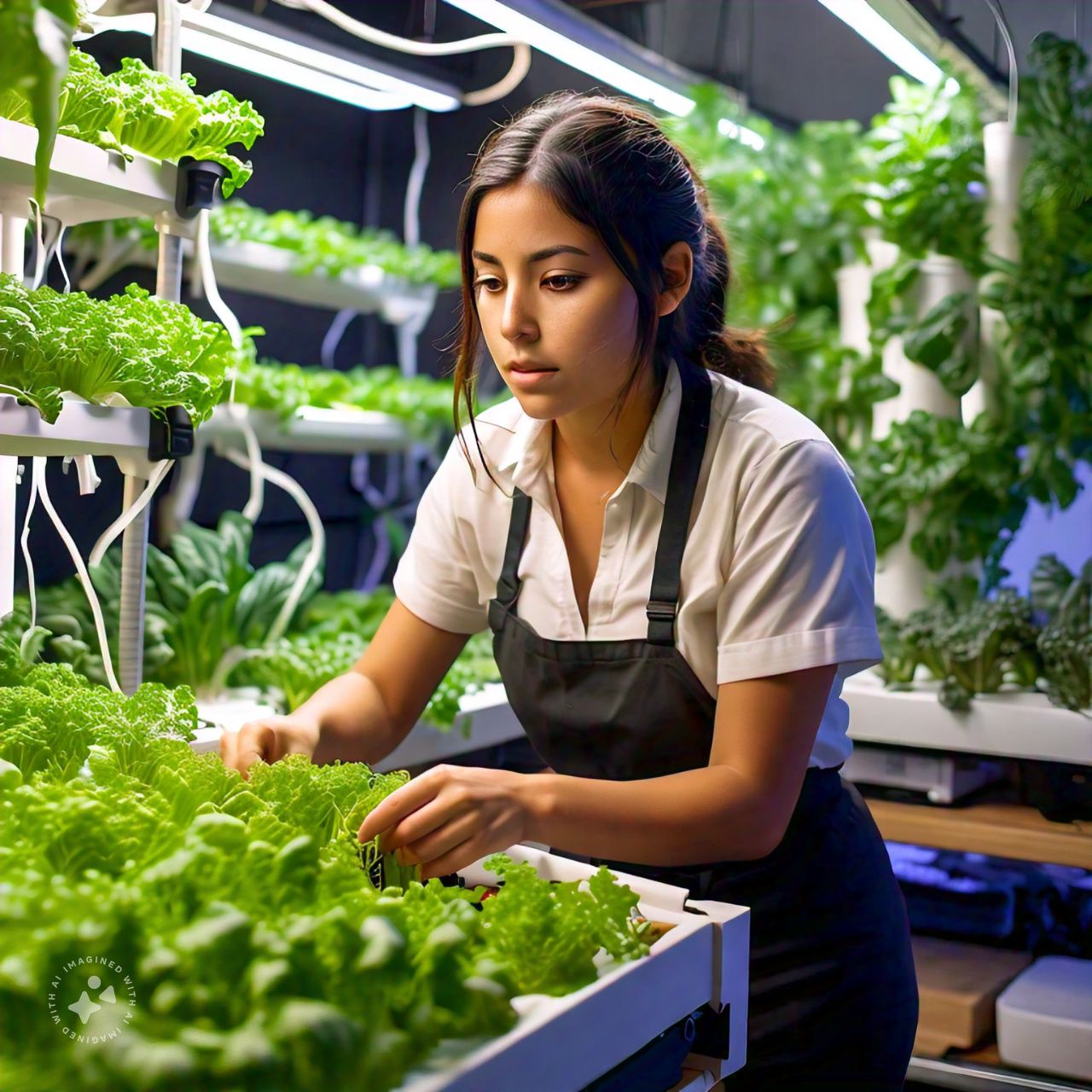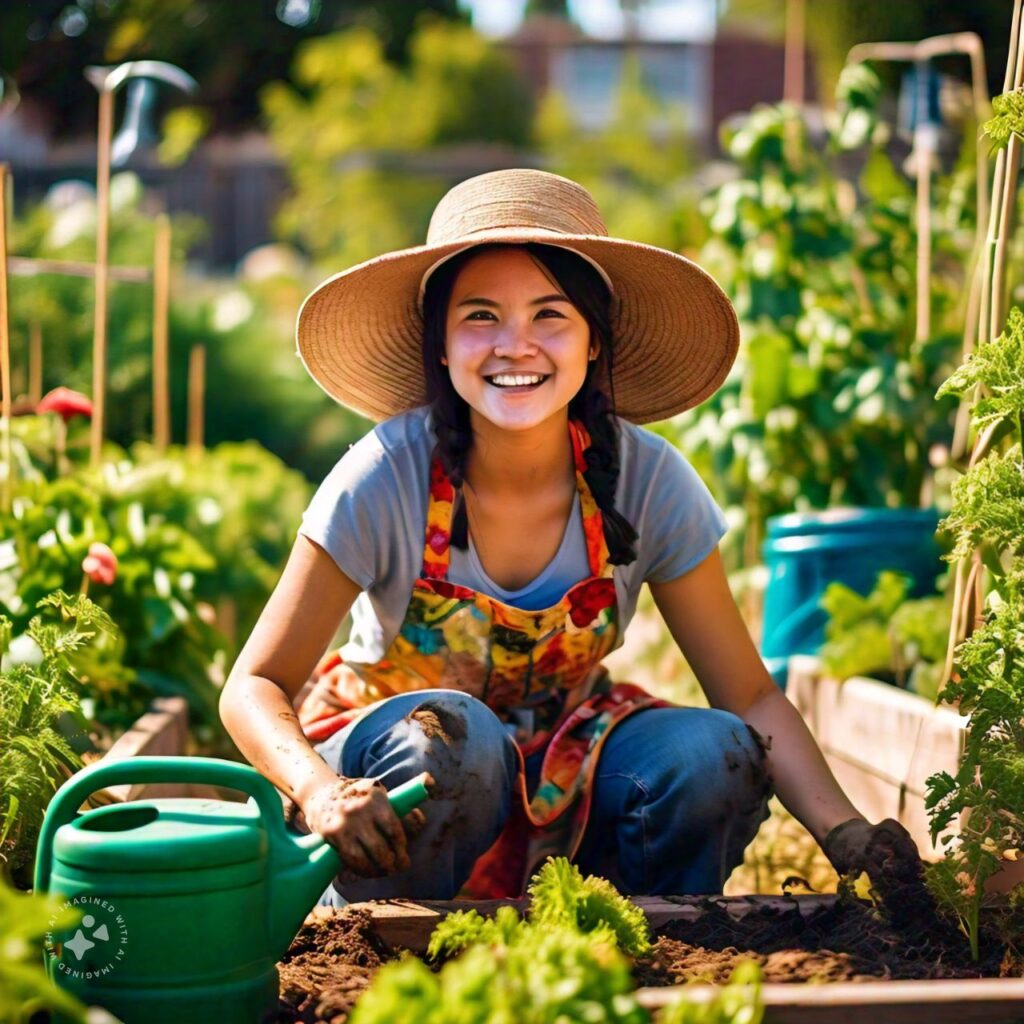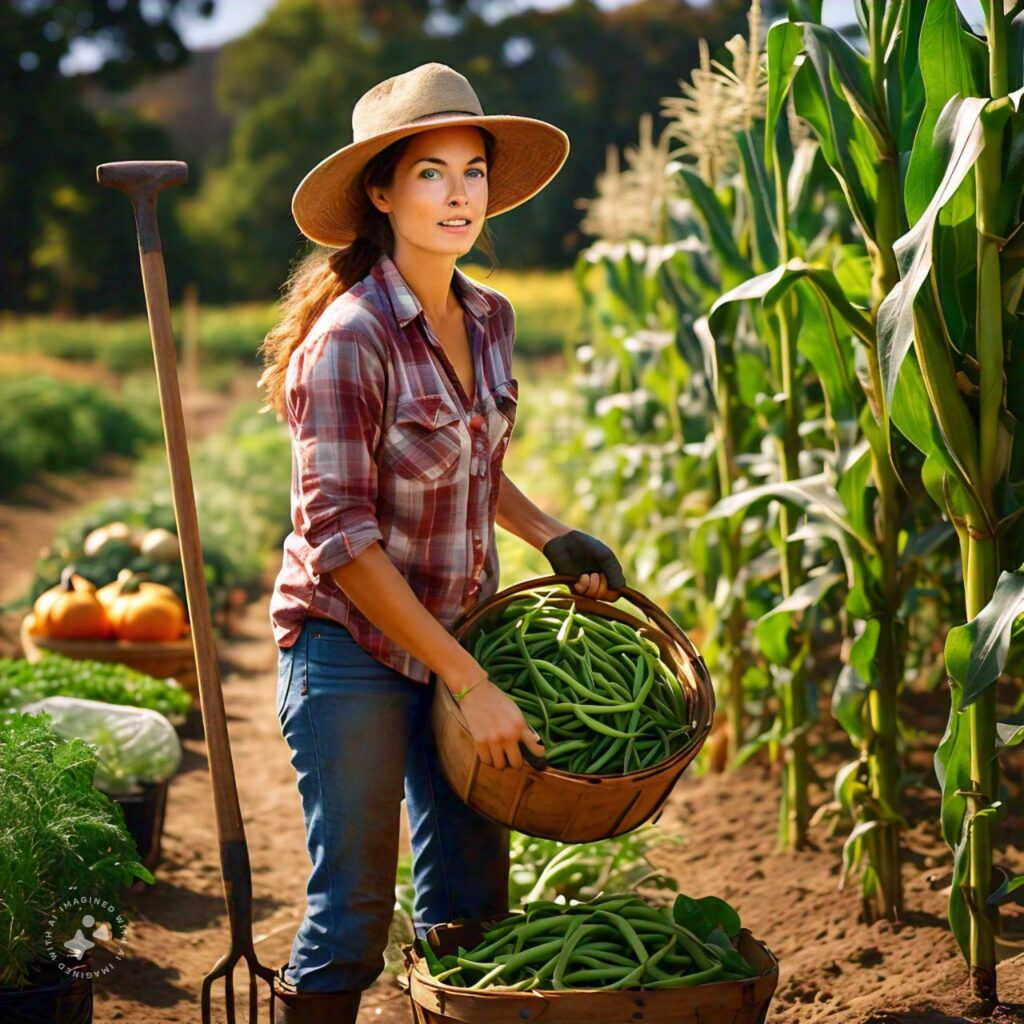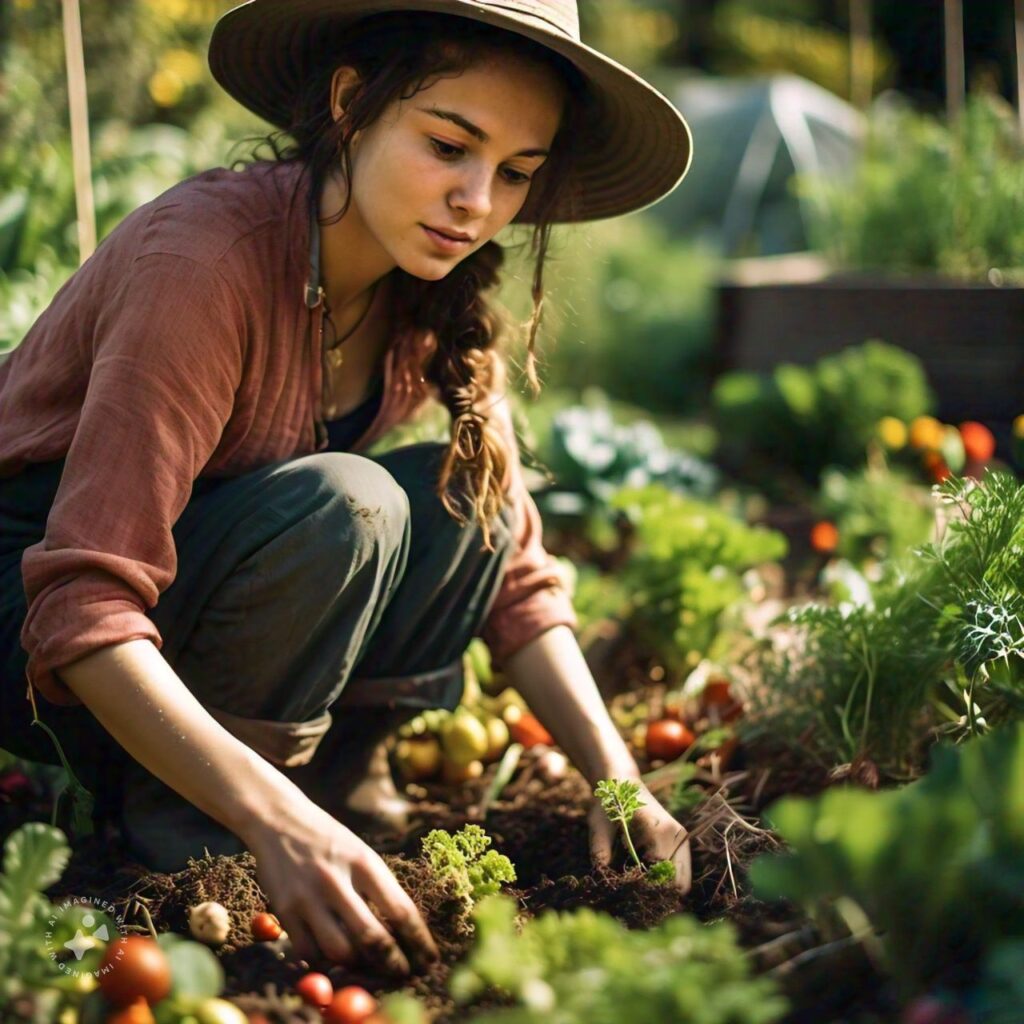Hydroponic gardening is revolutionizing the way we cultivate plants, enabling gardeners to grow lush, healthy crops without the need for traditional soil. This innovative method, which uses nutrient-rich water solutions instead of soil, offers numerous benefits for both hobbyists and commercial farmers alike. Whether you’re a seasoned gardener or a beginner looking to try something new, hydroponics provides a unique opportunity to produce higher yields, faster growth, and healthier plants.
In this article, we will explore the ins and outs of hydroponic gardening, providing you with a detailed guide on everything you need to know to get started, from understanding the basics of hydroponics to the advanced techniques that will help your plants thrive.
What is Hydroponic Gardening?
Hydroponics is a method of growing plants using a water-based nutrient solution rather than soil. Plants are grown with their roots exposed to a nutrient-rich solution, allowing them to absorb the essential minerals they need for growth directly from the water. This process eliminates the need for soil, as all of the nutrients that plants typically derive from the soil are provided in the water.
There are several types of hydroponic systems, each offering unique benefits depending on your specific gardening needs. These systems include Deep Water Culture (DWC), Nutrient Film Technique (NFT), Ebb and Flow Systems, and more, each of which we’ll discuss in more detail later in this article.
The Benefits of Hydroponic Gardening
Hydroponic gardening provides numerous advantages over traditional soil-based gardening. Some of the key benefits include:
- Faster Plant Growth: Since nutrients are delivered directly to the roots, plants can grow faster in a hydroponic system compared to traditional soil-based gardening.
- Higher Yields: Hydroponic systems often lead to more productive plants, as they can be grown closer together and in more controlled environments.
- Water Efficiency: Hydroponic systems use up to 90% less water than traditional gardening methods, making them a more sustainable option.
- Less Space Required: Plants grown hydroponically can be cultivated in smaller spaces, making it ideal for urban gardening or indoor setups.
- Pest and Disease Control: Since there is no soil, hydroponic plants are less susceptible to soil-borne pests and diseases, reducing the need for chemical pesticides.
- Year-Round Gardening: Hydroponics allows for continuous gardening, regardless of the weather or climate conditions outside.
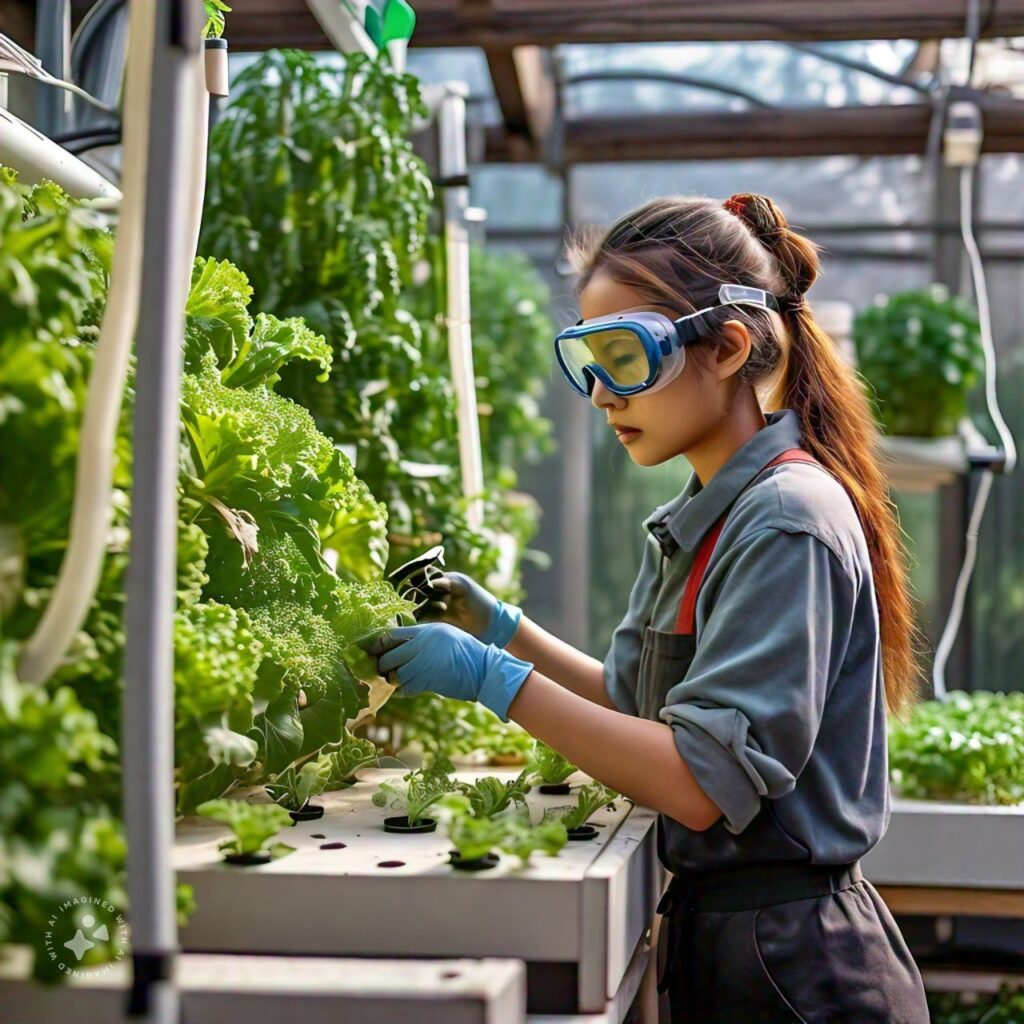
Types of Hydroponic Systems
There are several types of hydroponic systems, each with its advantages and ideal uses. Here’s a detailed look at the most popular systems:
1. Deep Water Culture (DWC)
Deep Water Culture is one of the simplest and most popular types of hydroponic systems. In a DWC system, plant roots are submerged directly in a nutrient-rich water solution. An air pump provides oxygen to the roots to prevent them from drowning, promoting healthy growth.
- Ideal For: Leafy greens like lettuce, kale, and spinach.
- Advantages: Simple to set up and maintain, cost-effective, and suitable for beginners.
2. Nutrient Film Technique (NFT)
The Nutrient Film Technique involves a constant flow of nutrient solution over the roots of the plants, which are suspended in sloped channels. The thin “film” of water ensures the roots get both oxygen and nutrients simultaneously. This method is highly efficient and suitable for many types of plants.
- Ideal For: Herbs and smaller plants like basil and strawberries.
- Advantages: Efficient water use, minimal medium required, and promotes rapid growth.
3. Ebb and Flow (Flood and Drain) System
In an Ebb and Flow system, plants are periodically flooded with nutrient-rich water, which then drains back into a reservoir. This cycle allows plants to absorb nutrients while also receiving ample oxygen.
- Ideal For: A wide variety of plants, including vegetables and flowers.
- Advantages: Versatile system that can accommodate various plant sizes and types.
4. Drip System
A drip system delivers a slow, steady supply of nutrient solution directly to the roots of each plant. It is ideal for larger plants that need more water and nutrients to thrive.
- Ideal For: Tomatoes, peppers, and larger fruiting plants.
- Advantages: Precise nutrient control and scalability for larger gardens.
5. Aeroponics
Aeroponics is a more advanced hydroponic method where plants are suspended in the air, and their roots are misted with a nutrient solution. This method allows for maximum oxygen exposure, leading to rapid growth.
- Ideal For: Root crops and leafy greens.
- Advantages: Extremely efficient use of water and nutrients, promotes fast growth.
Choosing the Right Nutrients for Your Hydroponic Garden
In hydroponic gardening, the quality of the nutrient solution is crucial to plant success. Plants grown hydroponically require a balanced nutrient solution that includes essential macronutrients such as nitrogen (N), phosphorus (P), and potassium (K), as well as important micronutrients like calcium, magnesium, and iron.
- Premixed Nutrients vs. DIY Solutions: Many gardeners opt for premixed hydroponic nutrient solutions designed for specific plant types. However, advanced gardeners may prefer to mix their nutrients to tailor them precisely to their plants’ needs.
- pH Levels: Maintaining the proper pH level of your nutrient solution is critical. Most hydroponic plants thrive in a pH range between 5.5 and 6.5. Regular monitoring and adjustments are necessary to ensure optimal nutrient absorption.
Growing Mediums Used in Hydroponic Systems
Although soil is not used in hydroponics, certain growing mediums can help support plant roots. These mediums provide structure, retain moisture, and allow for the free flow of nutrients. Popular hydroponic growing mediums include:
- Coco Coir: Made from coconut husks, coco coir is a sustainable, absorbent medium that retains moisture well.
- Rockwool: A dense material made from melted rock spun into fibers, Rockwool offers excellent water retention and aeration.
- Clay Pebbles: Lightweight and porous, clay pebbles provide excellent drainage and can be reused in hydroponic systems.
- Perlite and Vermiculite: These lightweight materials improve aeration and moisture retention, making them suitable for various hydroponic setups.
Lighting for Hydroponic Gardens
Lighting is essential for any hydroponic garden, especially if you are growing plants indoors or in low-light conditions. Full-spectrum LED grow lights are the most popular choice for hydroponic gardeners because they provide the necessary light wavelengths that plants need for photosynthesis.
- Blue Light: Encourages vegetative growth, ideal for leafy greens.
- Red Light: Promotes flowering and fruiting in plants.
It’s important to choose the right lighting system based on the type of plants you’re growing and their light requirements.

Starting Your Hydroponic Gardening: Step-by-Step Guide
- Choose Your Hydroponic System: Based on your space, budget, and the plants you want to grow, select the system that best fits your needs.
- Select Your Growing Medium: Choose a growing medium that works best for your plants and hydroponic system.
- Set Up Your Nutrient Solution: Prepare a nutrient-rich solution tailored to the needs of your plants and ensure it’s at the proper pH level.
- Plant Your Seeds or Seedlings: Start with high-quality seeds or seedlings, and make sure they are positioned correctly in your system for optimal growth.
- Monitor and Maintain: Regularly check the nutrient levels, pH balance, and lighting to ensure your plants remain healthy and grow to their full potential.
Common Challenges in Hydroponic Gardening
While hydroponic gardening offers numerous benefits, it can come with a few challenges:
- Nutrient Imbalances: Over- or underfeeding plants can lead to poor growth or nutrient deficiencies. Regular monitoring is crucial.
- Algae Growth: Excess moisture and light can lead to algae growth, which can clog systems and compete with plants for nutrients.
- Pump Failures: In systems that rely on pumps (such as DWC or NFT systems), a pump failure can lead to a lack of nutrients or oxygen, potentially harming plants.
By understanding these common issues and taking proactive steps to prevent them, you can enjoy a successful hydroponic gardening experience.
